[vc_row][vc_column][vc_column_text]
I often hear painters say they wish they could have a ‘looser’ painting style – not be so constrained in their style. But, the big questions is, how can you achieve this elusive ‘loose’ style?
Firstly, let’s try and analyse what it actually means. For me anyway, it is a quality of impressionistic spontaneity – effortless and bold, yet not careless. There is no sense of overworked detail and the painting has free flowing feel.
So I’ve put together a few ideas to help you achieve a new looser style of painting:
Tips for adopting a Looser Painting Style!
1 — A good way to start is by drawing. Free up you drawing style by doing some quick sketches in a sketch book and then you can move to your canvas. Here you can use paint, or I often use a oil pigment stick, to sketch out how I roughly want the painting to look. Do this quickly, there’s no need to include any details, it’s just to give you a general idea.
2 — Decide what kind of style you are aiming for and how loose you want to go. There are lots of degrees, you can start with just being a bit loose, then go from there as you get more confident. Look at examples of other painters work.
3 — Use bigger brushes than you normally would. Little tiny brushes encourage little tiny details. Be bold. Try some palette knives and paint shapers as well.
4 — Be careful not to become sloppy in your newly found looseness. It is easy to paint fast and carelessly but you need to maintain the basic principles of painting – colour, balance, light and shade, structure, shape – and then make it all look spontaneous!
5 — If parts of the painting aren’t going well, move on, don’t stop and try to correct. Those bits can be painted over later. It’s important to keep your momentum and flow going.
6 — Try not to keep adding details at the end. You are trying to achieve ‘necessary’ brush strokes and every unnecessary addition will take away from your goal.
7 — Probably the most important thing is your own mindset. Approach the painting with confidence and try and maintain that throughout the process. If you start wavering or feeling tired and frustrated, take a break.
Don’t forget, the more you practice the better you will become and below is an example of how I was able to introduce a looser painting style into my artworks.
Example – How to Adopt a Looser Painting Style
I like to use a fairly free flowing ‘loose’ painting style. If you are also looking to introduce a little more flexibility into your painting. Checkout the below example of how I used a loose painting style approach to bring a painting from start to finish. Feel free to ask any questions in the comments area and I will make sure to send a reply!
Step 1
I started with an underpainting using cadmium orange, yellow ochre, raw sienna and flinders blue violet. This gives me a base to work from – I vary the colours keeping in mind how I can use them as the base for the landscape. I use a fairly thin layer which will dry quickly.
Step 2
Sketch in a rough layout of the painting. Keep the lines quick and simple, it’s just a rough outline to give you an idea on how the painting will be laid out. I use a pigment stick (indigo) to do this but you can also use paint and a brush.
Step 3
Start shading in the darker areas of trees and the shadows. I used flinders blue violet, burnt umber and indigo, then overlaid this with some lighter browns. I am still using broad brush strokes with very little detail at this point. I also use a rubber paint shaper to lay down larger slabs of colour.
Step 4
I now introduce some greens to the foreground using the paint shaper and a palette knife. Note that there are still bits of the underpainting showing which I will keep as I like this effect. I am working fairly quickly and not adding any detail at all. I am more interested in getting the colour balance right.
Step 5
The final step is painting in the sky (again, leaving some of the underpainting showing through) and adding some minimal highlighting strokes of colour and detail to the central point of the painting. The idea is to keep the painting simple, loose and apparently effortless. I have not laboured over detail because I want to create a feeling of spontaneity.
If you are looking for more painting tips, I would encourage you to sign up to my newsletter and collect the free painters guide.
Please share with any other artists!
[/vc_column_text][/vc_column][/vc_row]
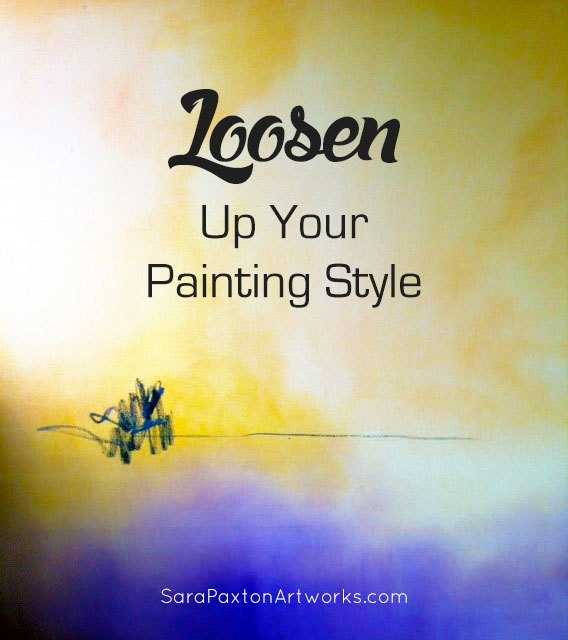

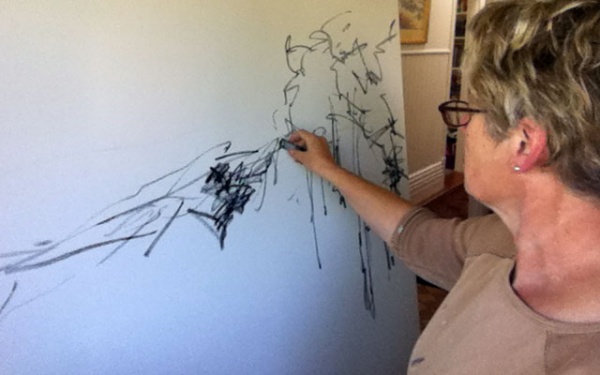
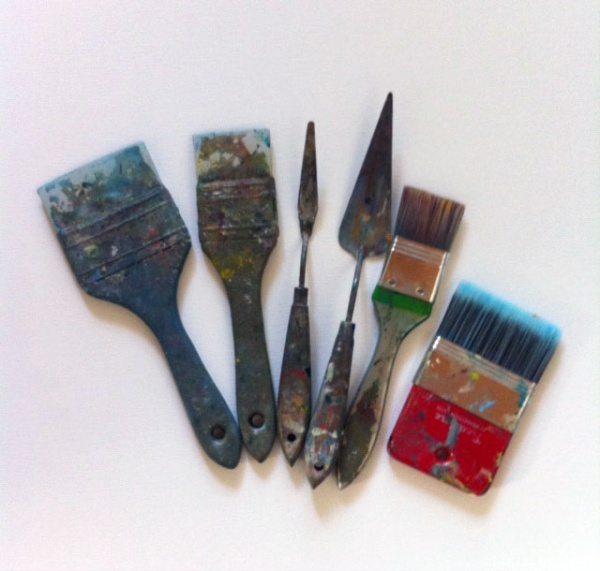
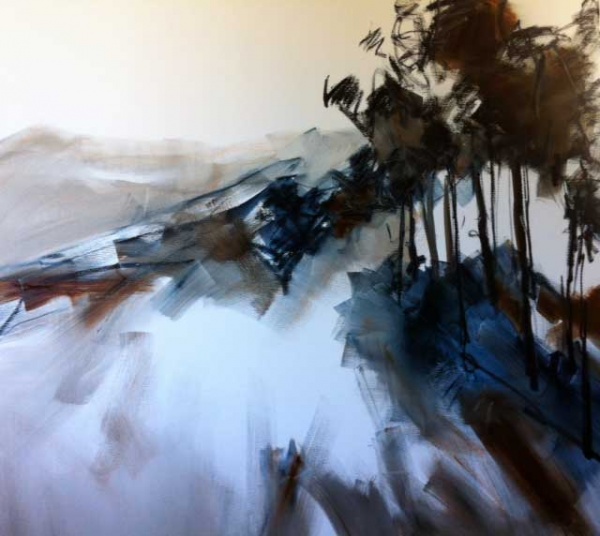
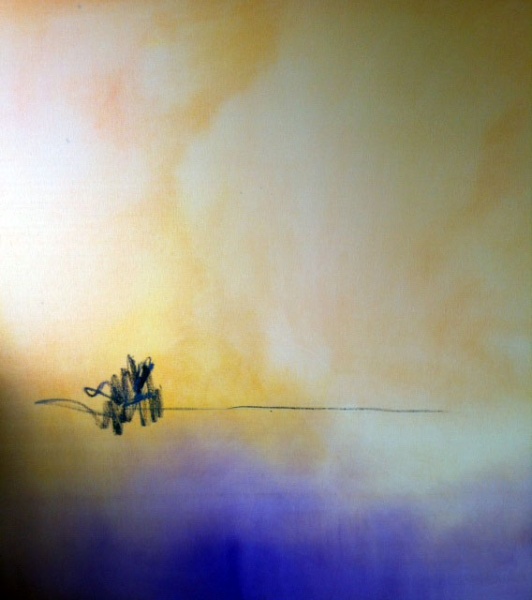
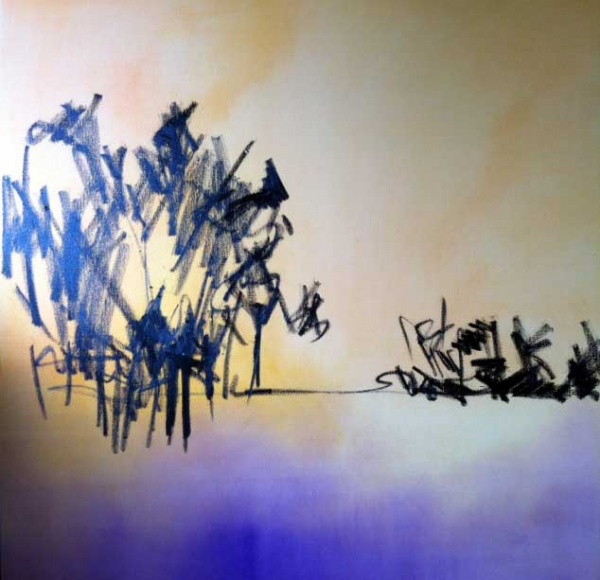
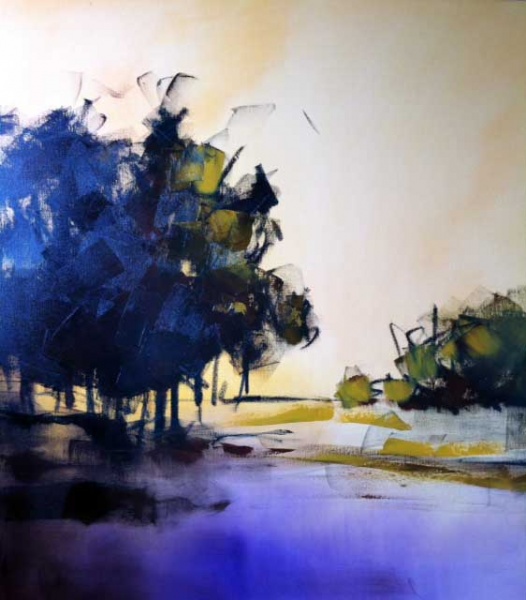
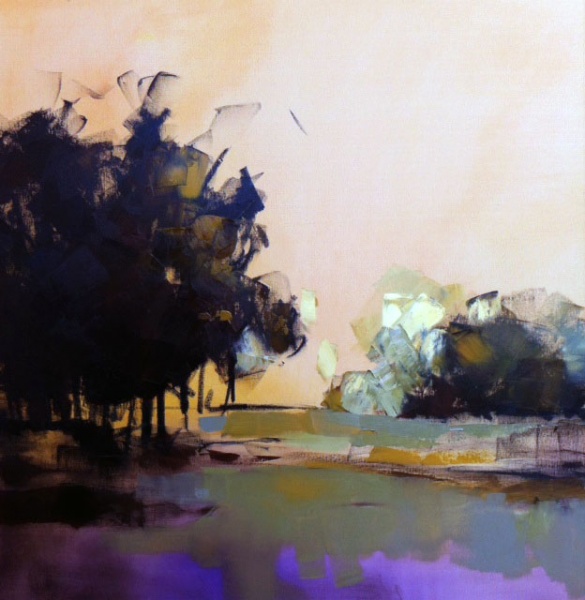
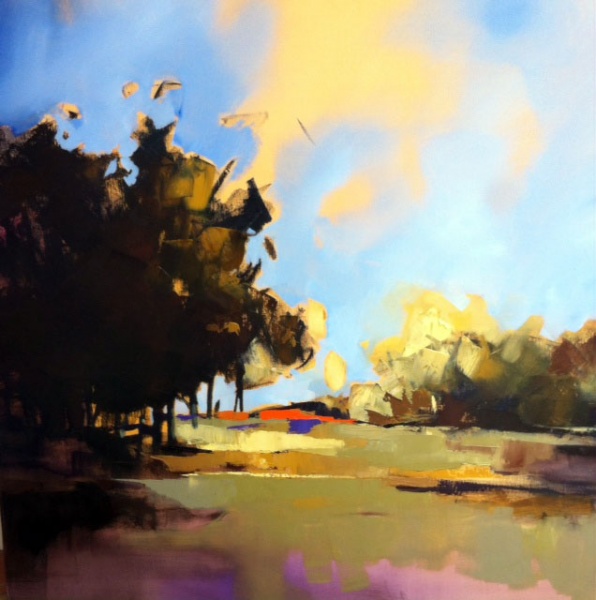
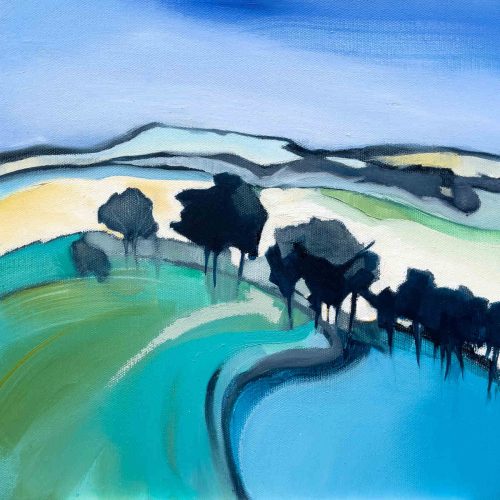

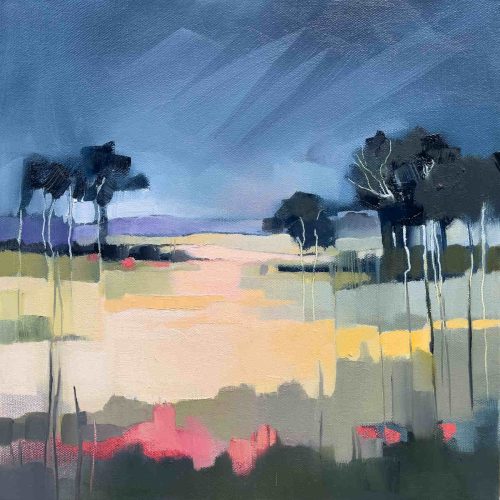
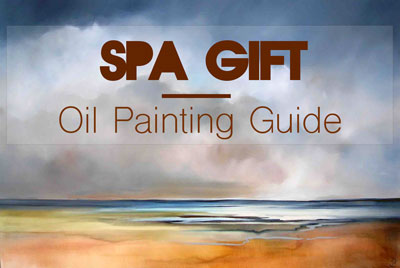
Hi Sara not sure if I’m on your mailing list…..I get info through FB ….more than happy to be added on to your mailing list…..would love to do a workshop with you if you ever have them….I’m in point lonsdale cheers Anne
Hi Anne, thanks for contacting me. If you would like to receive the newsletter I send out from time to time just add your email address in the blue panel at the top of the website home page (click on the arrow on the right hand side to bring it up). Or just click here:
http://eepurl.com/wz6rv and that will sign you up.
I don’t do any workshops at the moment, but will let you know if I do.
Hopefully will get to meet you at the exhibition at Seaview Gallery in November.
Beautiful work, Sara. Can you tell me what about your brushes…specifically the one with the red handle in the photo above, and also the size paint sharpers you find most useful for broad strokes. Thank you!
Hi Kate, thank you for your email and apologies for the delay in replying. I use mainly large square brushes (most of my paintings are quite big) and angle heads. The brush with the red handle is a Redline brush – it’s a good one for controlling brush strokes. I have a whole size range of shapers going up to 3 inches. The bigger sizes are great for creating nice solid, powerful wedges of colour. Hope this is helpful.
Sara.